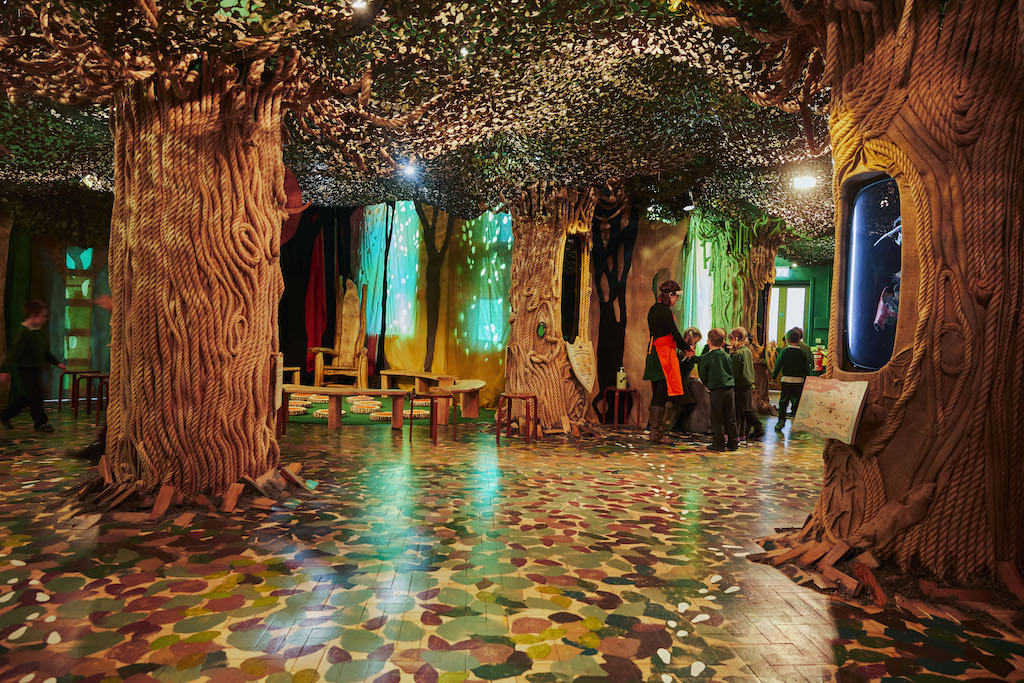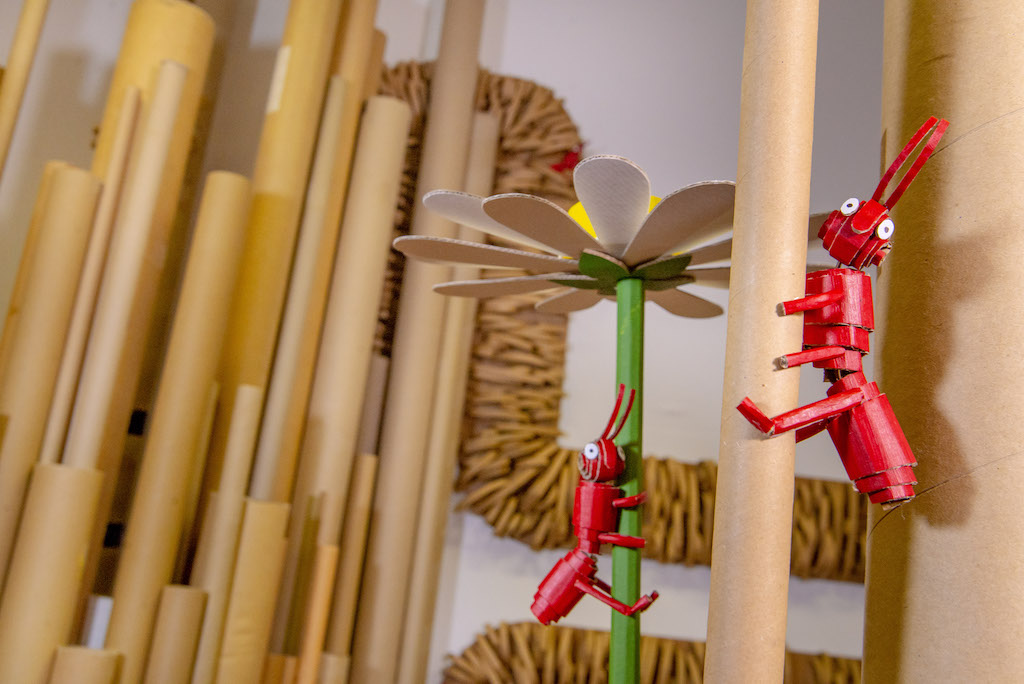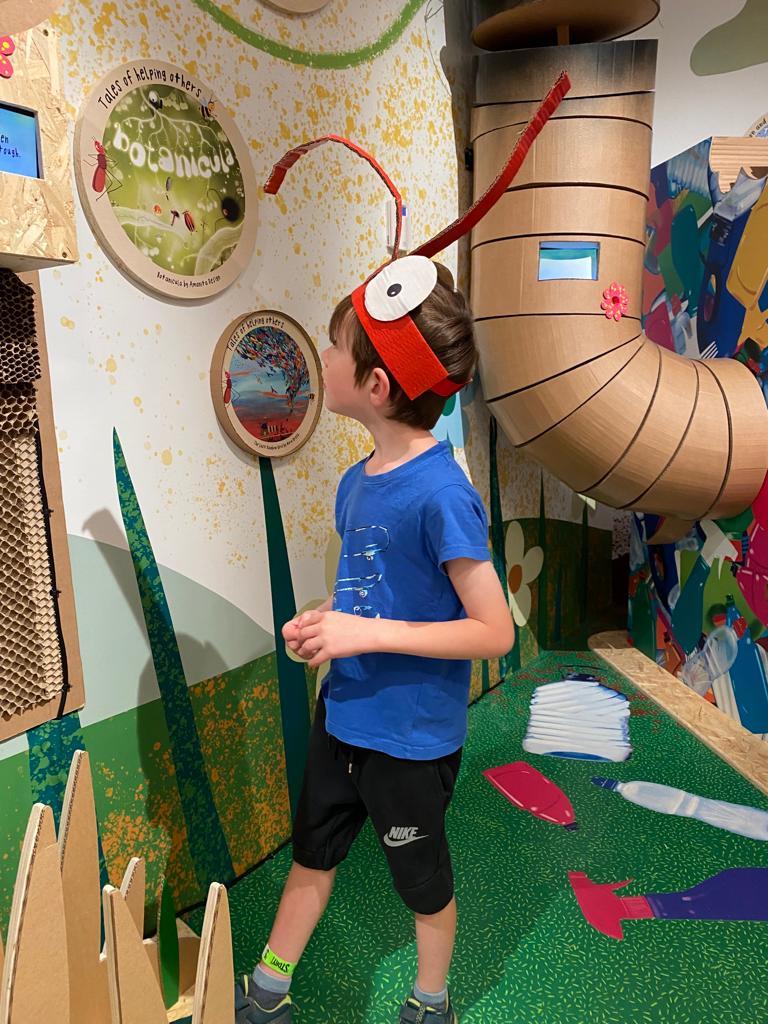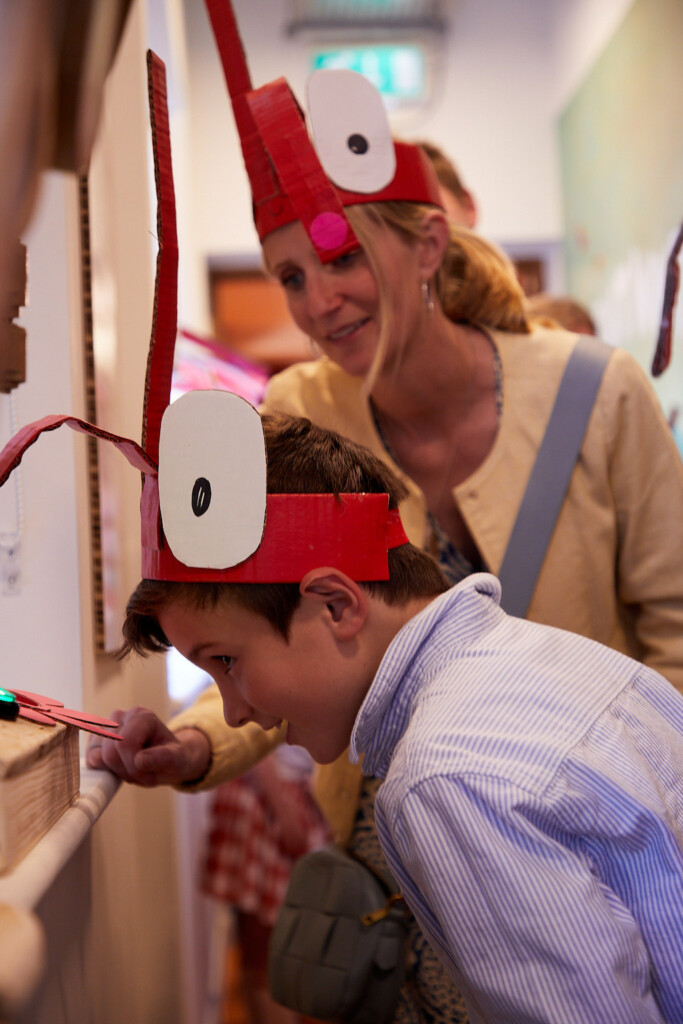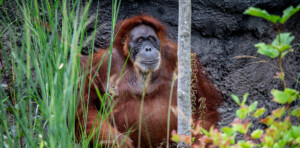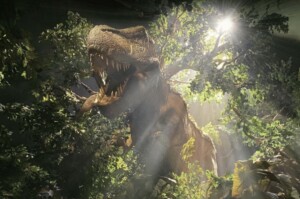The Story Museum has been celebrating the benefits of stories and enriching young lives in the heart of Oxford since 2003. Shortlisted for Art Fund Museum of the Year 2022, following a major refurbishment the previous year, the Story Museum showcases a plethora of multisensory activities and immersive exhibitions inspired by stories.
Compelling exhibits include the Enchanted Library. This invites visitors to step into a story, pushing between the fur coats in a wardrobe to enter CS Lewis’ Narnia, or discovering the rabbit hole down which Alice fell to Wonderland.
A Choose Your Own Adventure room allows children to embark on an adventure in the character of a space explorer, time traveller, or spy, encountering discoveries along the way.
The museum, founded in 2003, initially operated as a virtual museum, until, following a gift of £2.5m from a private donor, it moved to Pembroke Street. Between 2018 and 2020, the museum closed for a £6m redevelopment. This was partly funded by grants from the Heritage Lottery Fund and Arts Council England.
A career in sharing stories
Daniel Marcus Clark has been director of creative programme at the Story Museum since June 2022.
An award-winning creative director, writer, storyteller & composer, he is originally from Brighton. He specialises in imaginative ideas that connect people with the magic of stories and literature.
The creator and founder of Earfilms, a technique for sharing stories using a mixture of spoken word, 3D sound design and musical soundtracks to create multi-layered immersive pieces, his work has led to a number of prestigious awards, including the UK Young Artist of the Year Award, an Argus Angel Award for artistic excellence, and as musician/arranger on a Mercury Award nominated album.
Clark also writes and performs as a singer, songwriter and musician. As a member of improvisation group the Adventurists, he plays harp, arpeggione & guitar, and is the guitarist and singer with Swing supergroup The Magic Number. He is also the founding member of The Hat, a storytelling/ musical quartet signed to Rob Da Banks Sunday Best Records, which ran from 2003 to 2009.
Since 2002 he has regularly worked as a composer for theatre and has collaborated with various companies including Polarbear, Company Dora (Japan), Cartoon De Salvo and Circa 69.
The Story Museum’s mission
The Story Museum is currently showing Brilli-ANT, an exhibition featuring giant cardboard insects made through recycled cardboard and eco-friendly materials and inks. Clark created the exhibition to help families tackle climate anxiety and connect to the natural world.
Clark speaks to blooloop about the key considerations and challenges in designing a sustainable exhibition, the use of eco-friendly materials and future plans to create installations that can be reused as many times as possible.
He also talks about the means by which a museum can measure the sustainability of an exhibition through partnerships with local environmental advisors and the use of tools available, and the Story Museum’s commitment to sustainability, aiming to achieve net-zero carbon emissions by 2040, inspiring positive responses through storytelling, and collaborating with stakeholders to advance environmental action and climate justice.
A creative background
He begins by outlining his background, and the route that brought him to this extraordinary museum:
“I remember being about seven or eight years old, walking around the playground with a friend. We used to spend all our playtime, when everyone was playing football, inventing computer games, and films. For me, it has always been stories and ideas that have led me and excited me. My parents were both authors and journalists [he is the son of authors Eric Clark and Marcelle Bernstein], so story was always around the house, but I discovered traditional storytelling through narrative lyrics and songs.”
Accordingly, he studied jazz and traditional storytelling. He ended up in the spoken word scene in the early Noughties, performing with people such as Steven Camden, before transitioning into theatre.
“That felt like the natural place for this kind of output.”
This led to the founding of a company called Earfilms in 2010:
“It was concerned with looking at how 3D sound and story could cross over. We worked with artists, including people like Warsan Shire and Laura Dockrill to create immersive 3-D stories. I made a production of my own which toured all over the world. Off the back of that, I developed a bit of a love for doing things in museums. We did a 3D experience for the Metropolitan Museum’s Visitors to Versailles experience, and then a thing for Nottingham Castle, telling the stories that are held in objects.”
Moving to the The Story Museum
He then became creative director for Libraries Unlimited South West:
“The same bits that you end up doing as an artist, of commissioning, getting people to make certain elements to make an idea come to life, became a job in itself,” he comments. “Designing the programmes, and then bringing all the freelance artists in.”
When the role at The Story Museum came up, it felt, he says, as if it brought both his worlds together:
“The world of story had always led me, and then, as a multi-arts venue, we have a theatre, beautiful exhibition spaces, and a lot of playful installations. I couldn’t be happier to have ended up here.”
Describing The Story Museum, he says:
“For me, it is like a giant 3-D love letter to children’s stories. It’s a space where you can step inside the world of stories. It starts with a story rather than the act of reading, watching, or listening, and transports people into the stories themselves.
“We’re an upside-down museum to most, in that we have a collection of intangibles – of stories – at our heart; we create environments and exhibits and collect objects that help tell those stories, and, in some cases, the stories behind the stories. We choose what we exhibit based on whether it enriches someone’s life, and whether it brings a story to life for them.”
Enriching young lives
The Museum’s mission is to enrich young lives through stories:
“We achieve that in so many ways. We have this amazing museum that sits here in Oxford. People can walk through a Whispering Wood and hear traditional stories, or stories told to them by some of our story guides.
“They can step into our exhibits, or walk to our enchanted library where they can see our showcases filled with wonderful story objects, from C.S Lewis’s pen through to the plates that inspired Alan Garner’s The Owl Service.”
“They can play Pooh Sticks in the world of Winnie the Pooh; they can stand at the bottom of Alice’s rabbit hole; they can climb through the fur coats into Narnia – but they can also sit at C.S. Lewis’s desk, and write their own story. And they can step inside a ‘Choose your own adventure’ novel where there are 33 different stories.”
The museum also works with children and young people to help make decisions around collections, and to decide what the museum should look like:
“There are skills development programs for 12 to 16-year-olds in both creating stories, and also creating museum spaces. We have a very active learning program where we welcome hundreds of schools every year through the gates to start their story-loving journeys, training them up in traditional storytelling, and exploring story themes.”
Community event
The museum also goes out into the community:
“We reach out to community groups; we run big festivals, things like Alice’s Day,” Clark says.
Alice’s Day is Oxford’s city-wide celebration of all things Alice in Wonderland:
“It’s a great story to the communities around Oxford. We have a beautiful early space called Small Worlds. This is a miniature version of the museum for very young children. Here, they can go on a Bear Hunt or discover Traction Man’s under-sink world, relax in the Night Safe, ride on the Story Bus and enjoy Winnie and Wilbur’s miniature theatre.”
“It’s a playful environment using story. Then we also go out into community groups and train that same approach to parents and family and carers: ways to use traditional storytelling as a way of engaging and invigorating your children.”
There are, he says, lots of tendrils to The Story Museum:
“At the heart of it, we believe that stories are magical things that aid empathy, understanding, and betterment, and that allow these moments of wonder. And we want to enrich people’s lives through them.”
Reaching a wider audience at The Story Museum
Reaching beyond the conventional museum-going demographics is a key focus:
“We have targets in terms of reaching, not just through schools, but through community groups and youth groups, to people who wouldn’t normally engage with these kinds of collections or this kind of thinking. We wear our hearts on our sleeves in that way. It’s important for us that we’re not just preaching to the converted, and that we’re giving opportunities to everyone.”
Until Spring 2024, the Oxford Story Museum’s compelling Brilli-ANT exhibition will give children practical ways to tackle climate change in an engaging and thought-provoking way, without making them feel like the weight of the world is on their shoulders.
The exhibition is created from recycled cardboard and eco-friendly materials. It gives children and their adults an opportunity to put on insect antennae and to go inside the world of an anthill to discover what happened next after Aesop’s Fable of the Ant and the Grasshopper. Whilst the Grasshopper sang his songs, the ants stored up their supplies for winter – now, however, climate change is threatening their ordered world.
During their adventure, children meet a variety of giant insects voiced by known actors and activisits including Derek Jacobi, Samantha Bond, Julian Clary, Noga Levy Rapoport, Isy Suttie, Ellis James and Nick Cope. From dung beetles explaining recycling, to bumblebees showing the importance of helping others – each insect has a story to tell about how their species has adapted to climate change.
Brilli-ANT
Clark explains:
“With Brilli-ANT we wanted to equip children, young people, and families with the start of a conversation about what they can do in a positive way about the climate crisis. We had a small creative team, but we also worked with climate advisors who came in. That included some amazing activists, environmental scientists, and a fantastic woman called Mim Saxl, who is a specialist in climate anxiety, especially in children and young people.
“It became clear to us that we needed to take a stand. The approach that we took was to do something that was, to use a term by Barry Falls, the amazing illustrator on the project, ‘unapologetically positive’.”
“When we’re talking to children and young people about global climate change, there’s such a sense of foreboding in the messaging. It’s all as if we’re telling them about this dystopian meteorite that’s coming towards earth; that it’s inevitable, that the fires are raging and licking at our feet, and we’ve got to throw water on it.
“It felt more positive to turn that round and talk about the things that are happening, about the waves that are already moving. It then feels that there is something we can do. There are groups of people taking these actions and moving in this direction, and we can jump on this ship. That was very much the thematic approach that we took with BrilliANT.”
Starting with a story
The Story Museum always starts with a story:
“On this occasion, the story we started with in this occasion was the Ant and the Grasshopper, Aesop’s fable. We have taken some liberties, as people have throughout time with the Ant and the Grasshopper. Its history is that is has been used as a plaything by different political persuasions. We have just taken it as a starting-point for the narrative.
“So winter comes, and stays. The ants, who have refused to share their supplies and kept them all for themselves, find the supplies have run out and there is smoke in the air.
“You become an ant, and have to go on a journey, cap in hand, to the grasshopper. You meet other insects who show how they’ve adapted to a changing climate, and the steps they’ve taken to make the meadow a ‘nice’ place. Then you meet a dung beetle, voiced by Dereck Jacobi, who talks about recycling and reusing. You meet a glow-worm who talks about making sure you only use what you need, because glow-worms’ light is diminished by light pollution.”
Gathering inspiration
The core creative team working on Brilli-ANT comprised Clark, cardboard sculptor Lottie Smith, illustrator Barry Falls, and the writer Chitra Soundar.
“We sent each of the artists to Natural History museums in their areas,” Clark comments:
“Lottie Smith went to Great North Museum where she got to spend some time with their insect collection, which served as an inspiration for the cardboard sculptures. Barry Falls went to Ulster Museum and examined their insect collection. He drew all the characters in the environments based on that.”
“Chitra Soundar spent time at the Oxford Museum of Natural History with the entomology team, discovering the key characteristics of the insects that would be the main characters. It sits as a piece between an imagined world, the real world, and science. We wanted to make something that honoured each of those strands. And it’s silly, which is good fun.
“We also worked with the amazing composer Cosmo Sheldrake. A lot of the soundtrack was constructed from ant recordings he’d made. The whole soundscape is a mixture of music, and then recordings of anthills. It’s a beautiful soundscape. It’s worth coming just for that.”
Addressing climate anxiety at The Story Museum
Climate anxiety is increasingly prevalent among children. According to a YouGov poll, one in three young people in Britain are scared (33%), sad (34%) or pessimistic (34%) about climate change. 28% reported feeling “overwhelmed.”
“I think we can underestimate the sense of pressure felt by the young,” he says:
“We have all grown up with the sense that the next generation will have to deal with this. It’s pervasive. The more that we can be aware and responsible around it, and actually consider the message that we consciously want to share, the better.
“Little bits of good are happening, and that’s what we need to hold onto. Let’s make that wave bigger, and push on. We asked each of the climate advisors who worked on this exhibition to list their collections of positive actions that people could take part in, online or in real life. So, on leaving the experience, you can access this curated list offering four different perspectives around the good stuff that is happening, and the trains to jump on, effectively.”
Creating eco-friendly exhibitions
Outlining the practical considerations and challenges inherent in creating an eco-friendly exhibition, he says:
“We weren’t perfect. Going on this journey was challenging, and it was expensive.
In fact, it was more challenging than we thought. We did make concessions at points that were cost choices. I don’t want to present this as if we were a perfect museum that has done this perfect, sustainable exhibition. But we have made some really clear choices.”
The entire exhibition at The Story Museum was built from cardboard:
“We used recycled cardboard wherever we could. We got cardboard from local businesses and from various places. Any that we had to buy was bought as recycled, sustainable cardboard. This resulted in something that was, luckily, an aesthetic that we wanted.
“It’s a very clear aesthetic, and it’s hardier than people think as a material. We treated each of the sculptures with Paverpol, a sustainable textile hardener. This meant the sculptures could be wiped clean, and had a tiny bit more structural integrity.”
A sustainable approach
From a maintenance perspective, creating an exhibition from such ephemeral materials meant it needed to be maintained more than something made from more durable resources.
“There is a certain amount of rolling care that’s needed with something like this. It’s not something that just stands there,” he says:
“For the ink, we worked with a sustainable printer, Seacourt. They use special inks that are climate-positive, which is about as green as you can get. All of the materials are recycled, and they recycle all of the materials afterwards. In previous exhibitions, we have used things like Foamex boards for signs. But here, everything was made from cardboard or from a sustainable source.”
“All the print on the floor, the print on the walls, everything, was climate-positive, which was amazing.”
Concerning cost:
“It was considerably more expensive. We budgeted for a certain amount of print, and went quite far over. But we felt it was such a large part of it, and we needed to do it.”
The company we worked with, Seacourt, were amazing. They’re one of the country’s leading sustainable printers for exhibits.”
Using tech
There is a lot of technology in the experience at The Story Museum:
“We used recycled tech wherever we could,” he says. “The whole thing has a game engine behind it. You put on antennae that contain RFID tags. As you touch the little flowers, it brings the insect to life. It also gives you letters that help you reach the ending. It’s a big, playable experience.
“We used second-hand Raspberry Pi devices, or ones that we had lying around. We did buy screens; we didn’t want them to dominate, so we bought small ones.
“There is, of course, an ongoing carbon footprint of the expedition, since it needs to be plugged in.
“It definitely cost more, in time and money, to choose to go down these routes. We were fortunate that we had chosen to go down that route from the very start. It was yoked into the design, and we didn’t have to pivot. It was something that was considered right from the first line on a piece of paper.”
A balancing act
For the future, he says:
“The Story Museum is a busy, hands-on museum, open many days of the year. We have a lot of young visitors that interact with exhibits in ways that you possibly wouldn’t imagine. Everything has to be ready to be pulled apart. So yes, we would choose to go that route again, but would have to pick which aspects we make sustainable.”
“It’s a balancing act. We need to guarantee that it is always going to work. It needs to always to be in its best shape when people come. The print, though, was an absolute win for us. The quality, strength and finish of the sustainable print was wonderful, and is a big step that we could take. Although it was more expensive, it paid off hugely, and looks beautiful.
“We can happily say, hand on heart, that it was the right choice to make.”
However:
“I don’t think I’d be very popular if I made every exhibit from now on out of cardboard.”
The need for The Story Museum
Encapsulating the need for a museum like this, he says:
“I think that one of the greatest commodities we have as humans is the imagination. I feel proud to be part of a journey with people who are celebrating and encouraging people’s imaginations to be the best they can be.
“We have lots of museums that share parts of our history, but the history of our imagination, too, is fascinating. It’s so rich, and it is alive through stories. We have stories in our museum that are thousands of years old.
“What better record could there be of the wonder of humanity than a beautiful, incredible, transformative story that has survived for thousands of years?”


